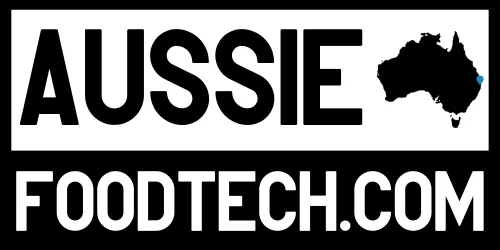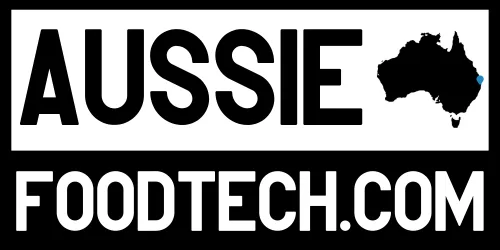Simplify Your Business, Optimize Your Profits
Articles
Simplify Your Business, Optimize Your Profits
Articles

Leverage Data Analytics to Drive Restaurant Success
Data-Driven Success
In today’s competitive food service industry, making data-driven decisions is crucial for success. Leveraging data analytics can help you understand customer behavior, optimize operations, and ultimately increase your restaurant's profitability. Here’s how you can harness the power of data analytics to elevate your restaurant’s performance.
1. Understand Customer Preferences
One of the most significant benefits of data analytics is the ability to gain insights into your customers' preferences. By analyzing data from your online ordering system, loyalty program, and point-of-sale transactions, you can identify which menu items are most popular, when customers are most likely to place orders, and which promotions are most effective. This knowledge allows you to tailor your offerings to meet customer demands, increasing satisfaction and encouraging repeat business.
For example, if you notice that a particular dish is consistently ordered during lunch hours, you might consider featuring it in a lunch special or promoting it more heavily during those times. Understanding customer preferences also helps in menu engineering, where you can strategically place high-margin items in prime positions on your menu to boost profitability.
2. Optimize Inventory Management
Data analytics can significantly improve your inventory management by providing real-time insights into stock levels, usage patterns, and wastage. By tracking which ingredients are used most frequently and in what quantities, you can better forecast demand and adjust your ordering processes accordingly. This reduces the risk of over-ordering or under-ordering, which can lead to waste or stockouts.
Additionally, analyzing inventory data can help identify trends, such as seasonal variations in ingredient usage, allowing you to prepare for peak periods and negotiate better deals with suppliers based on your purchasing history. With optimized inventory management, you can reduce costs and ensure that your kitchen is always well-stocked with the right ingredients.
3. Enhance Marketing Strategies
Data analytics plays a crucial role in refining your marketing efforts. By examining customer data, you can segment your audience based on factors like order frequency, average spend, and preferred communication channels. This segmentation enables you to create targeted marketing campaigns that resonate with specific customer groups, leading to higher engagement and conversion rates.
For instance, if you find that a group of customers frequently orders from your restaurant but rarely engages with your promotions, you might target them with personalized offers via email or SMS. On the other hand, you could use social media advertising to reach new customers in your area, using data insights to tailor your messaging and optimize ad spend.
4. Monitor Operational Performance
Data analytics isn’t just about understanding customers—it’s also about improving your restaurant’s internal operations. By tracking key performance indicators (KPIs) such as table turnover rates, order preparation times, and labor costs, you can identify areas where efficiency can be improved.
For example, if you notice that order preparation times are longer than usual during certain hours, you might consider adjusting staffing levels or streamlining your kitchen processes. Monitoring operational performance through data allows you to make informed decisions that enhance productivity, reduce costs, and improve the overall customer experience.
5. Predict Trends and Plan for the Future
One of the most powerful aspects of data analytics is its ability to help you predict future trends and make proactive decisions. By analyzing historical data, you can identify patterns and make forecasts about customer behavior, sales, and market conditions. This foresight allows you to stay ahead of the competition by adapting your menu, marketing strategies, and operations to meet evolving demands.
For example, if data shows an increasing preference for plant-based menu items, you might consider expanding your vegetarian or vegan offerings. Predictive analytics can also help you plan for seasonal fluctuations, ensuring that you’re fully prepared for busy periods like holidays or special events.
Conclusion
Leveraging data analytics is no longer an option for modern restaurants—it’s a necessity. By harnessing the power of data, you can gain valuable insights into customer preferences, optimize your operations, enhance your marketing strategies, and plan for the future with confidence. Embrace data analytics as a core part of your restaurant’s strategy, and watch as it transforms your business, driving success and profitability in a competitive industry.

Leverage Data Analytics to Drive Restaurant Success
Data-Driven Success
In today’s competitive food service industry, making data-driven decisions is crucial for success. Leveraging data analytics can help you understand customer behavior, optimize operations, and ultimately increase your restaurant's profitability. Here’s how you can harness the power of data analytics to elevate your restaurant’s performance.
1. Understand Customer Preferences
One of the most significant benefits of data analytics is the ability to gain insights into your customers' preferences. By analyzing data from your online ordering system, loyalty program, and point-of-sale transactions, you can identify which menu items are most popular, when customers are most likely to place orders, and which promotions are most effective. This knowledge allows you to tailor your offerings to meet customer demands, increasing satisfaction and encouraging repeat business.
For example, if you notice that a particular dish is consistently ordered during lunch hours, you might consider featuring it in a lunch special or promoting it more heavily during those times. Understanding customer preferences also helps in menu engineering, where you can strategically place high-margin items in prime positions on your menu to boost profitability.
2. Optimize Inventory Management
Data analytics can significantly improve your inventory management by providing real-time insights into stock levels, usage patterns, and wastage. By tracking which ingredients are used most frequently and in what quantities, you can better forecast demand and adjust your ordering processes accordingly. This reduces the risk of over-ordering or under-ordering, which can lead to waste or stockouts.
Additionally, analyzing inventory data can help identify trends, such as seasonal variations in ingredient usage, allowing you to prepare for peak periods and negotiate better deals with suppliers based on your purchasing history. With optimized inventory management, you can reduce costs and ensure that your kitchen is always well-stocked with the right ingredients.
3. Enhance Marketing Strategies
Data analytics plays a crucial role in refining your marketing efforts. By examining customer data, you can segment your audience based on factors like order frequency, average spend, and preferred communication channels. This segmentation enables you to create targeted marketing campaigns that resonate with specific customer groups, leading to higher engagement and conversion rates.
For instance, if you find that a group of customers frequently orders from your restaurant but rarely engages with your promotions, you might target them with personalized offers via email or SMS. On the other hand, you could use social media advertising to reach new customers in your area, using data insights to tailor your messaging and optimize ad spend.
4. Monitor Operational Performance
Data analytics isn’t just about understanding customers—it’s also about improving your restaurant’s internal operations. By tracking key performance indicators (KPIs) such as table turnover rates, order preparation times, and labor costs, you can identify areas where efficiency can be improved.
For example, if you notice that order preparation times are longer than usual during certain hours, you might consider adjusting staffing levels or streamlining your kitchen processes. Monitoring operational performance through data allows you to make informed decisions that enhance productivity, reduce costs, and improve the overall customer experience.
5. Predict Trends and Plan for the Future
One of the most powerful aspects of data analytics is its ability to help you predict future trends and make proactive decisions. By analyzing historical data, you can identify patterns and make forecasts about customer behavior, sales, and market conditions. This foresight allows you to stay ahead of the competition by adapting your menu, marketing strategies, and operations to meet evolving demands.
For example, if data shows an increasing preference for plant-based menu items, you might consider expanding your vegetarian or vegan offerings. Predictive analytics can also help you plan for seasonal fluctuations, ensuring that you’re fully prepared for busy periods like holidays or special events.
Conclusion
Leveraging data analytics is no longer an option for modern restaurants—it’s a necessity. By harnessing the power of data, you can gain valuable insights into customer preferences, optimize your operations, enhance your marketing strategies, and plan for the future with confidence. Embrace data analytics as a core part of your restaurant’s strategy, and watch as it transforms your business, driving success and profitability in a competitive industry.
AUTOMATED SMS & EMAIL BUILT IN...
About Us
"Empowering food businesses with seamless digital solutions to grow, thrive, and succeed every day."
Copyright© 2025 Aussie Food Tech - All Rights Reserved.


